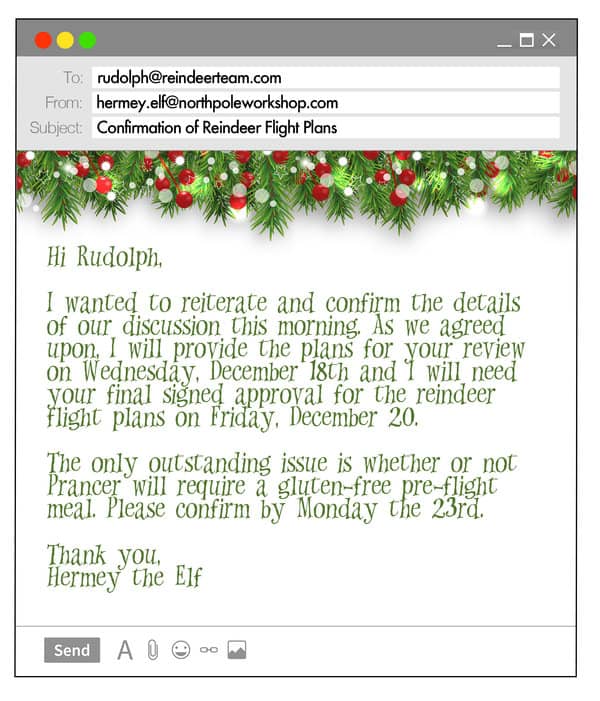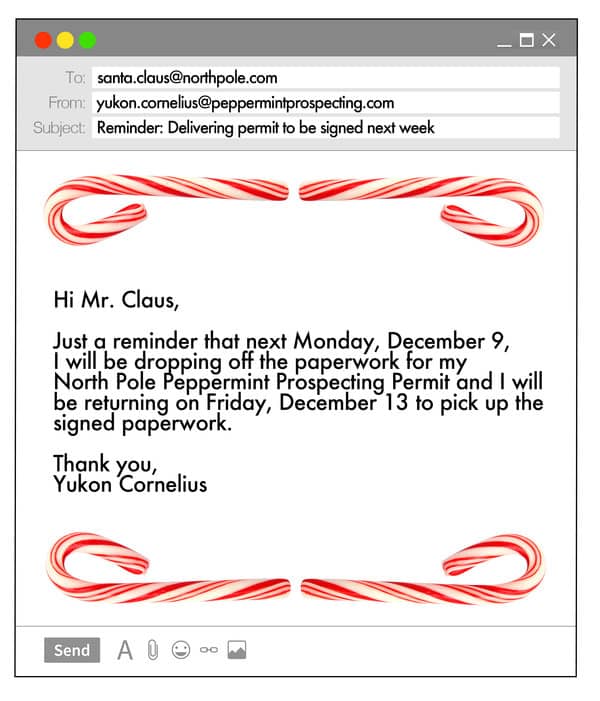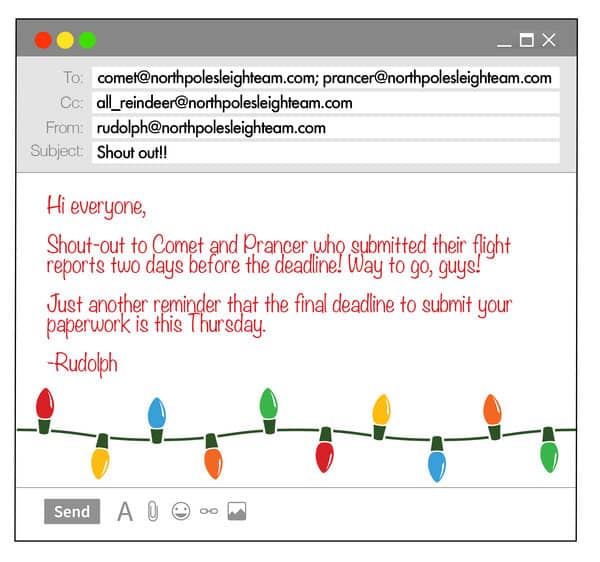Tips for Managing Projects During the Holidays

The holidays are coming up, and that often means a lot of employees and customers taking vacation days to spend time with families, bake holiday cookies, and scramble to finish holiday shopping. With all the holidays that fall between November and January, there are a lot of days with everyone out-of-office. Throw in some snow and ice storms, and you may have days when everyone works remotely instead of trekking into the office. That makes it hard to keep your projects moving and hit deadlines.
It can be complicated keeping track of everyone’s schedules and meeting deadlines during this hectic time of year, but that doesn’t mean that the work stops or your projects can’t get done. It may take a little more coordination than usual, but it’s still possible to meet project deadlines. Here are some tips to keep your projects moving during the holiday season.
1. Set your timeline
Building out a timeline is the first step to any successful project, but there are many factors you need to take into consideration. As you plan out your project timeline, as always, you need to consider your stakeholders’ schedules when setting deadlines. If you need to meet certain deadlines, make sure that your stakeholders will be available to give you approval. Check your shared calendar first. If you notice that someone has not indicated their out-of-office days for the upcoming holiday season, you’ll want to take the initiative and ask them to add those dates to their calendar.
You should also block out time for official holidays and work your deadlines around those. Any end of the year project will always lose two weeks around Christmas and New Years since so many people take time off. You might also need to pad your timelines a little more than usual to account for cold and flu season and snow days. This will help you plan your deadlines accordingly.
Once you have your timeline set up, be sure to share it with decision makers and stakeholders. You can even highlight line items that require approval from them. Keeping your stakeholders informed from the get-go is a proactive way of letting everyone know what to expect from this project.
Here’s an example of planning ahead to get important dates to add to your timeline.

2. Be assertive
Even if your typical communication style isn’t assertive, you’ll have to adjust your style to get the information you need. This can be especially important when managing people who may have seniority over you. Take the below example; Santa Claus does not report to Hermey the elf, in fact, it’s the other way around! But in this case, in order for Hermey to do his job successfully, he needs Santa Claus to report back to him.

If you’re “managing up,” you may need to be prepared to send reminder emails to your boss, or even your boss’ boss to get what you need. There can be a fine line between effective assertive communication and aggressive communication, but being assertive can make all the difference when executing your timeline. You can learn more about this important difference in our course “This vs. That: Assertive vs. Aggressive.”
3. Document discussions in writing
Let’s say you had an in-person meeting with a stakeholder to discuss project goals and deadlines. You should have been taking detailed notes in that meeting about what was discussed, decided, who has action items, and what issues are still outstanding. Immediately following that meeting, put all that important information into an email to reiterate and confirm what you discussed. That way, you won’t forget anything important you talked about, will have a paper trail of any important deadlines that were agreed upon, and your stakeholder has a confirmation of the discussion. Your email can look something like this:

Not only can this serve as a helpful reminder to both you and your stakeholder, but it can also be a good way to hold stakeholders accountable for the verbal commitments they have made to you.
4. Drive the timeline
Along the same lines of the assertive communication style we talked about before, you should also get into the habit of sending reminders to your stakeholders as deadlines approach. If you told your boss that you would have a new brochure for them to proof next Monday, and that you would need final approval of that copy by Wednesday, send them an email a week out as a reminder. That email could look something like this:

This is a scenario where you need to find a balance between persistent and pestering. Persistence can be key here because the last thing you want is for a stakeholder to miss a deadline, but you never sent them any reminder emails. As the project manager, you’re accountable for getting the project done. You need information and approvals from others, so your job is to give them every opportunity to succeed. First, you share the timeline for the entire project and highlight the milestones where you need their involvement. Second, you give them a “heads-up” as the deadline approaches, a week or two in advance. Finally, another reminder as the deadline arrives.
Including other people on your emails is another way to hold yourself and others accountable. Cc-ing your boss in emails can leverage their authority to get other senior leaders to do what you asked them to do. We also have a course in email etiquette to help you be persistent in a positive way. If your email is perceived as threatening, you could end up on someone’s naughty list! You can learn about email etiquette and balancing persistence versus pestering in our course here!
5. Compliment people for making their deadlines
Sending a little positive feedback can go a long way with any kind of project. Not only will it make someone feel good about themselves, but it will incentivize them (and others) to meet future deadlines. Once you recognize someone for doing a good job in front of their peers, you’d be surprised at how many people will strive to earn the same recognition from you by getting their tasks done. Here’s an example:

6. Budget "team time"
The holiday season can be a great time for team-building and filling the office with events like crockpot lunches, gift exchanges, and more! Building camaraderie with your team in fun, non-work related ways is good for morale and beneficial to productivity, but it can also mean that work can come to a grinding halt. If you know that there’s an extra-long holiday lunch one day, or are cutting out of work early for a holiday happy hour, be sure to indicate that in your project timelines. Chances are you won’t get what you need if your approval deadline is the same day as the holiday office party.
Explore some of our training content to help you build your project management skills here!
Additional Resources
- Communicating your goals and priorities to others is the first step to good project management. Check out this blog on "7 Secrets for Setting and Communicating Priorities at Work."
- Communication is at the heart of any project, so bolster your skills with some of our communication skills training videos.
- Explore the videos mentioned in this blog on Email Etiquette and Persistent vs. Pestering here.



